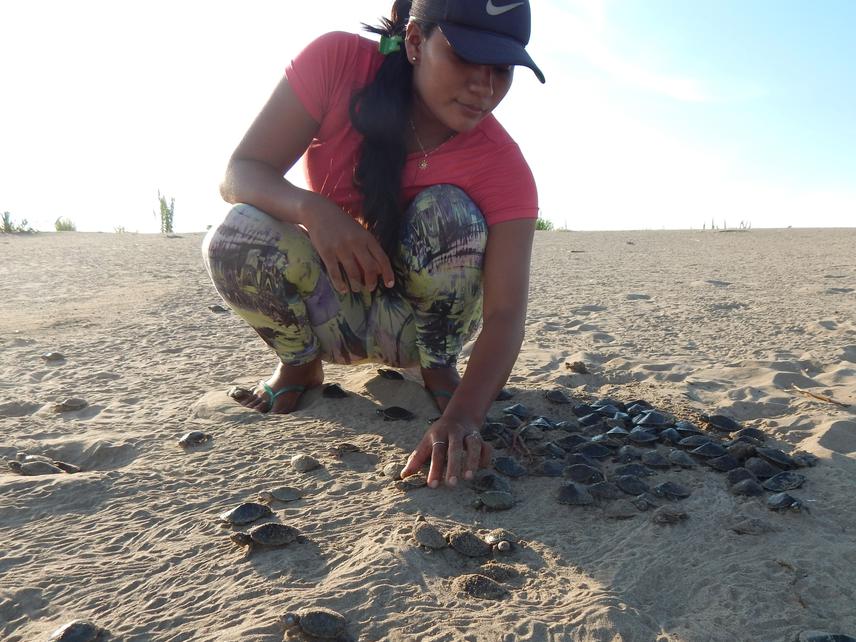Marina Coelho Cruz Secco
Our objectives all support the larger goal of conservation of freshwater turtles within the MSDR by improving scientific knowledge and by engaging local villagers in conservation efforts. We will offer technical support and train local villagers to protect nesting areas and collect biological data by providing them with necessary materials and knowledge to conduct these activities, as well as making visits to answer questions and help solve problems the villagers may encounter. The specific objectives are to ensure monitoring on the major beaches targeted in past seasons and to expand monitoring and protection to additional beaches. We will test off the-shelf unmanned aerial vehicles to overfly nesting sandbars and take still images and short videos of the nesting areas. In this way, we expect to corroborate data collected by local villagers and also to describe a new method for nest counting that has the potential of expanding our geographic area.

Release of hatchlings.
In the Amazon, turtles are an important food resource for local people, especially Giant South American (Podocnemis expansa), Yellow-spotted (P. unifilis) and Six-tubercled (P. sextuberculata) River Turtles. Over harvest of P. expansa in the 19th Century resulted in a drastic population decline in the area of the current Mamiraua Sustainable Development Reserve (MSDR). The decline of P. expansa increased hunting pressure on the other two species and a recent assessment by the IUCN considered P. expansa critically endangered, P. unifilis endangered, and P. sextuberculata vulnerable (TTWG 2014). To minimize poaching by outsiders in the MSDR, local villagers are recruited to protect turtle nesting sites. The Mamiraua Institute has supported this initiative since the early 1990’s. It strives to ensure conservation of females, eggs and hatchlings during the breeding season when persecution is worst. The Institute provides technical support, and with the help of local volunteers documents the number of protected nests annually. Thus, enhanced protection of turtles and nests depends on greater engagement of volunteers from local villages and their continuous presence on sandbars throughout the turtle nesting period.
The goal is to collect data on life history of the three species. To do this, we plan to further engage and train local villagers as citizen scientists and collaborators in river turtle conservation. Additionally, we propose to conduct a pilot study testing the ability of unmanned aircraft to accurately and efficiently count turtle nests, corroborating of data collected by local villagers. The MSDR is located in a flooding area at the confluence of the Solimões and Japurá rivers, near the town of Tefé (AM) and has 1,124,000 ha. The MSDR is a state reserve created to ensure sustainable use of the natural resources by the local peoples—river turtles and their eggs are a significant resource harvested by them – together with the improvement of their quality of life. The whole Reserve is located in a floodplain and one of its fundamental characteristics is the great influence that the hydrological cycle exerts on its terrestrial and aquatic habitats. As a recognition of its importance and huge biological diversity, Mamiraua was designated a RAMSAR site in 1993, being the only one located in the Brazilian Amazon.